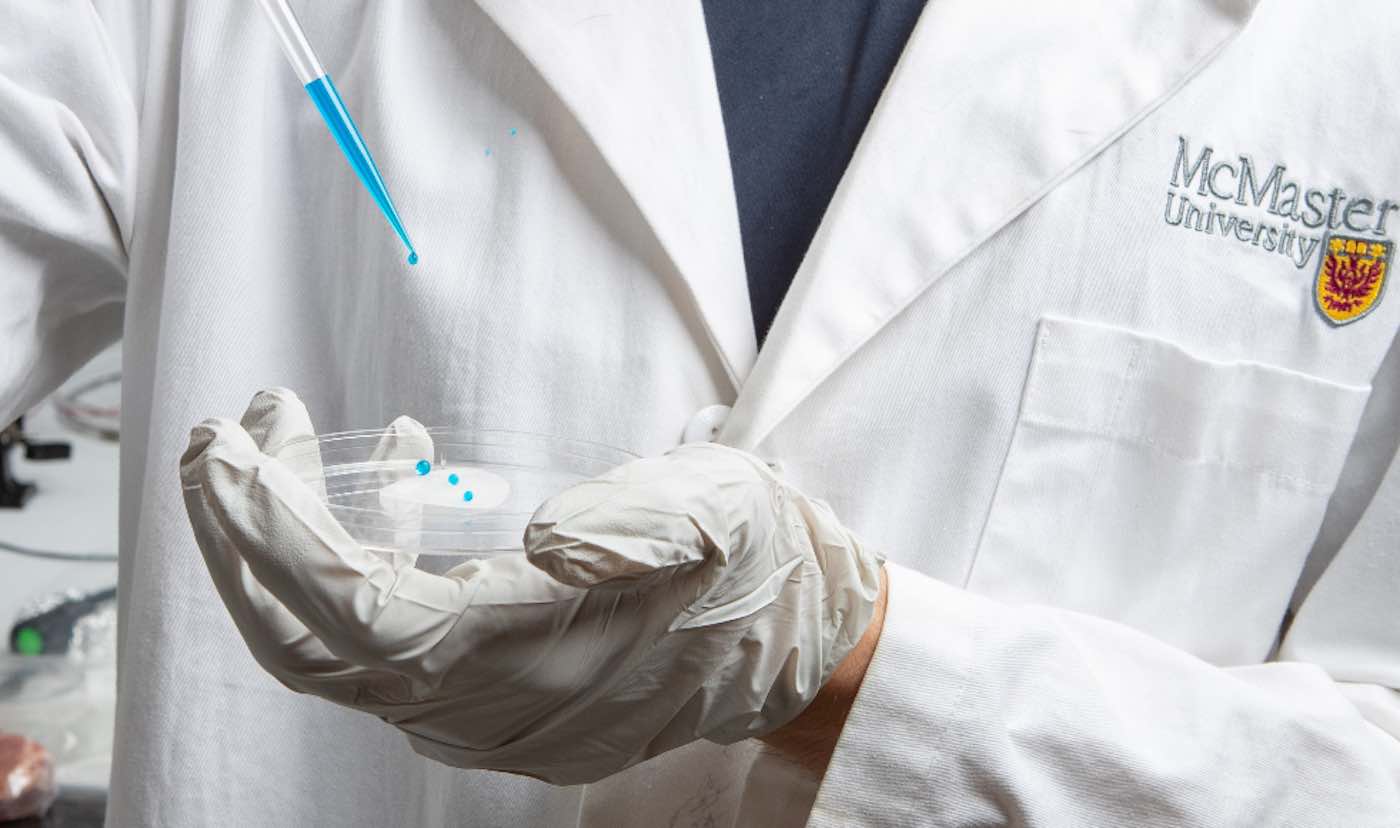A team of researchers at McMaster University in Ontario, Canada, has developed a self-cleaning material that can repel all forms of bacteria, preventing the transfer of antibiotic-resistant superbugs and other dangerous bacteria on surfaces found in settings ranging from hospitals to kitchens.
A treated form of conventional transparent wrap—it can be shrink-wrapped onto door handles, railings, IV stands and other surfaces that can be magnets for bacteria such as MRSA and C. difficile.
The treated material is also ideal for food packaging, where it could stop the accidental transfer of bacteria such as E. coli, Salmonella and listeria from raw chicken, meat and other foods, as described in a paper published this week in the journal ACS Nano.
The research was led by engineers Leyla Soleymani and Tohid Didar, who collaborated with colleagues from McMaster’s Institute for Infectious Disease Research and the McMaster-based Canadian Centre for Electron Microscopy.
Inspired by the water-repellent lotus leaf, the new surface works through a combination of nano-scale surface engineering and chemistry. The surface is textured with microscopic wrinkles that exclude all external molecules. A drop of water or blood, for example, simply bounces away when it lands on the surface. The same is true for bacteria.
RELATED: Copper Hospital Beds Could Save Millions of Lives Since New Study Says They Harbor 95% Less Bacteria
“We’re structurally tuning that plastic,” says Soleymani, an engineering physicist. “This material gives us something that can be applied to all kinds of things.”
The surface is also treated chemically to further enhance its repellent properties, resulting in a barrier that is flexible, durable and inexpensive to reproduce.
“We can see this technology being used in all kinds of institutional and domestic settings,” Didar says. “As the world confronts the crisis of anti-microbial resistance, we hope it will become an important part of the anti-bacterial toolbox.”
ALSO: Not Only Does This New Clothing Charge Your Phone, It Can Protect You From Viruses and Bacteria
The researchers tested the material using two of the most troubling forms of antibiotic-resistant bacteria: MRSA and Pseudomonas, with the collaboration of Brown and his colleagues at McMaster’s Institute for Infectious Disease Research.
Their co-authors on the paper include Sara M. Imani, Roderick Maclachlan, Kenneth Rachwalski, Yuting Chan, Bryan Lee, Mark McInnes, Kathryn Grandfield and Eric D. Brown.
Grandfield helped the team verify the effectiveness of the surface by capturing electron microscope images showing that virtually no bacteria could transfer to the new surface.
The researchers are hoping to work with a commercial partner to develop commercial applications for the wrap.
Reprinted from McMaster University – Photo by Georgia Kirkos, released by the University
Share This Innovation With Your Friends On Social Media…




















